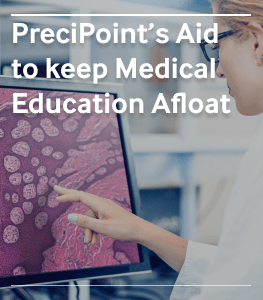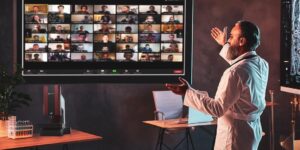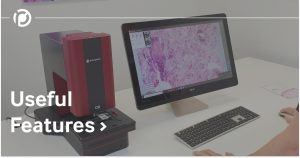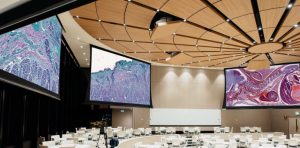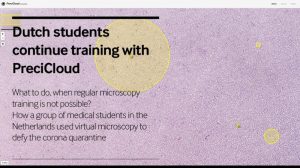When the pandemic hit the world, everyone was suddenly trying to figure out what to do and how to do it efficiently. This article explains how PreciPoint was able to facilitate an education solution to keep medical students in Singapore up to date with their hematology studies. The information in this article comes from a group of hematologists in Singapore.
Singapore’s fast answer to the pandemic
Singapore detected its first COVID-19 case on January 23, 2020. That sparked an immediate change in education activities.
For a lot of medical students, the quarantine meant that they had to find an alternative solution to continuing their education. Hospitals and Universities were also on the outlook to find a solution to educate their residents fast. All group education activities were inevitably suspended, and the problem was urgent.
How are the universities and hospitals going to teach microscopy-based hematology training?
Hematology Training Centers in Singapore
Singapore has two large postgraduate hematology training centers, the National University Cancer Institute Singapore (NCIS) and the Singapore General Hospital (SGH), with a total of 13 hematology trainees. The postgraduate hematology training centers are responsible for administering a 3.5-year training program comprising all aspects of hematology, including laboratory and transfusion hematology. (1)
Challenges Faced in the Pre-Pandemic Era
The teaching strategy was in the midst of a change even before the pandemic hit. They wanted to create a solution that allowed them to standardize their training. Each training center delivered the same program, but at different locations. That means that the trainees in the programs were not able to benefit from a larger pool of subspecialty faculty. Another topic that arose was traveling. Of course, faculty and trainees had to travel to locations to attend the programs.
Impact of the Pandemic on Hematology Training
May A. Cheong et al. mentioned in their article Keeping the bloodline of haematology medical education flowing during a pandemic, that “Laboratory training is a core requirement of hematology specialty training in Singapore. Morphology and flow cytometry are critical to diagnosis, and all trainees require a firm foundation. The key tool in morphology teaching is the multi-headed microscope, comprising one specimen stage and multiple viewing ports for trainees to observe from.” (2)
When you picture this scenario, social distancing was not a problem before the pandemic. Once the cases started to surge in numbers, social distancing became reality, thus preventing the traditional way of training in a laboratory environment.
Stay Ahead with Insights from Precipoint!
Welcome to our newsletter! Be the first to know about our latest products, services, webinars, and happenings in PreciPoint. Don't miss out on this opportunity to stay informed. Subscribe to our newsletter today!
By clicking “Subscribe”, you agree to our privacy policy.
Real-time scanning of glass slides offered a solution
With COVID-19 acting as a catalyst, within a week, all educational lectures at NCIS and SGH transitioned to the digital realm. The transition was quite easy to adapt to and allowed for online lectures to be presented to several different disciplines, including nurses, allied health workers from NCIS, and trainees from other institutions. The online platform gave the trainees a means to communicate, collaborate, and even ask questions or contact the lecturer privately. PreciPoint was able to help NCIS by loaning the training center a dual digital microscope and scanner (O8). NCIS used the O8’s real-time scanning capabilities to conduct morphology teachings and for tumor boards.
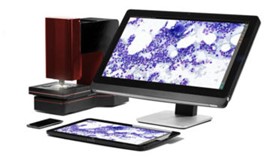
How does real-time scanning works?
Images from the dual digital microscope and scanner are captured in real-time and displayed on a computer monitor. The device continues to scan in real-time while someone is navigating throughout the sample.
The best part about real-time scanning is that the scanned images are placed in a cache. Therefore, there will be no problems with data storage. If you combine the O8 with Zoom or some other video communications software, you can easily create a virtual classroom. This allows simultaneous viewing of the same slide by multiple end-users. (3)
Further benefits can come from using an education viewing software such as the PreciCloud. It is a cloud-based storage platform where images can be stored for future teaching and learning. It allows for higher interaction between all parties involved. The annotation functions are of particular importance, as lecturers or trainees can draw on the slide.
PreciPoint was able to contribute by providing a dual digital microscope and scanner (O8) to the NCIS training center. This allows the efficient distribution and collection of information as well as standardize the education material. Laboratory training is moved to the digital realm and when things start to normalize, we will still profit from these changes made during the pandemic.
References:
(1-3) Cheong, M.A., Chee, Y.‐L., Ng, H.J. and Jen, W.‐Y. (2020), Keeping the bloodline of haematology medical education flowing during a pandemic. Int J Lab Hematol.

